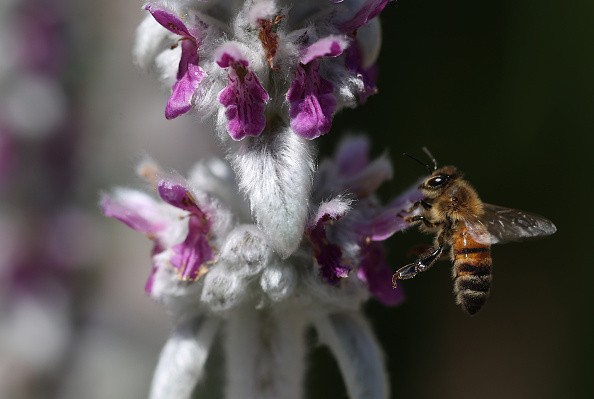The rainbow bee, also known as Homalictus fijiensis, is a crucial plant pollinator that's distributed all over the archipelagos of the Pacific Ocean, Southeast Asia, Australia, and Indonesia.

Rainbow Bee
Well known for their conspicuous colors, these plant pollinators play a crucial role in the maintenance of local ecosystems. And they do this by distributing pollen and assisting in plant growth. Now, a new paper proposes their existence in some places may be because of human intervention, and that the present world may have appeared very different if humans hadn't taken over their habitat.
Rainbow bees only inhabit the lowlands of Fiji thousands of years ago, but about 1000BC, humans came into their habitat and started clearing the land and bringing in new weeds and plants into the area.
That seems to have aided them since rainbow bees love nesting in clear and open land.
Lead author James Dorey, a researcher from Flinders University said in a statement that previous research linked the relatively current population expansion to warming climates, but study shows a fascinating and positive response from an indigenous species to human modifications to the landscape which began about 1000BC.
Adding that this species is a pollinator that pollinates many plant species (super-generalist pollinator). And one of the most crucial bee pollinators in Fiji really appears to have gained from the arrival of humans and subsequent land clearing in Fiji.
Populations of Bee in Fiji
James Dorey's team did not note any corresponding change in the population of bees on the island of Kaadu, where human activity is lesser.
Authors of the study say the research reveals how the impact of human intrusion can be concluded even when there are no fossil records. After the phylogenetic analyses of mitochondrial and genomic DNA of Fiji's indigenous bee populations, the conclusions were made.
This revealed "that bee populations in Fiji increased greatly, beginning about 3000 years ago and increasing rapidly from about 2000 years ago," researchers said in a statement.
The study also gives a new deeper understanding on how today's world was formed by our ancestors' decisions.

Emerging Picture of the Pacific
Dr. Stephen Zagala, SA Museum's research fellow in World Cultures said early European tourers and naturalists were not aware that large-scale human dispersals had already been changing the ecologies of Pacific islands for a period of 1,000 years.
Zagala said this study contributes useful details to an emerging picture of the Pacific as an extremely cultivated landscape.
Following centuries of human impact on the ecosystems in the world, a new study from Flinders University details an instance of how a common endemic bee species has thrived since the initial land clearances by humans on Fiji.
In a new paper in Molecular Ecology (DOI: 10.1111/mec.16034), research headed by Flinders University examines a connection between the increase of Homalictus fijiensis, a bee that is common in the lowlands of Fiji.
Related Article : Modern Pesticides' Harmful Effects on Bees Worsened in the Last Decade
For more news, updates about bees and similar topics don't forget to follow Nature World News!
© 2025 NatureWorldNews.com All rights reserved. Do not reproduce without permission.





